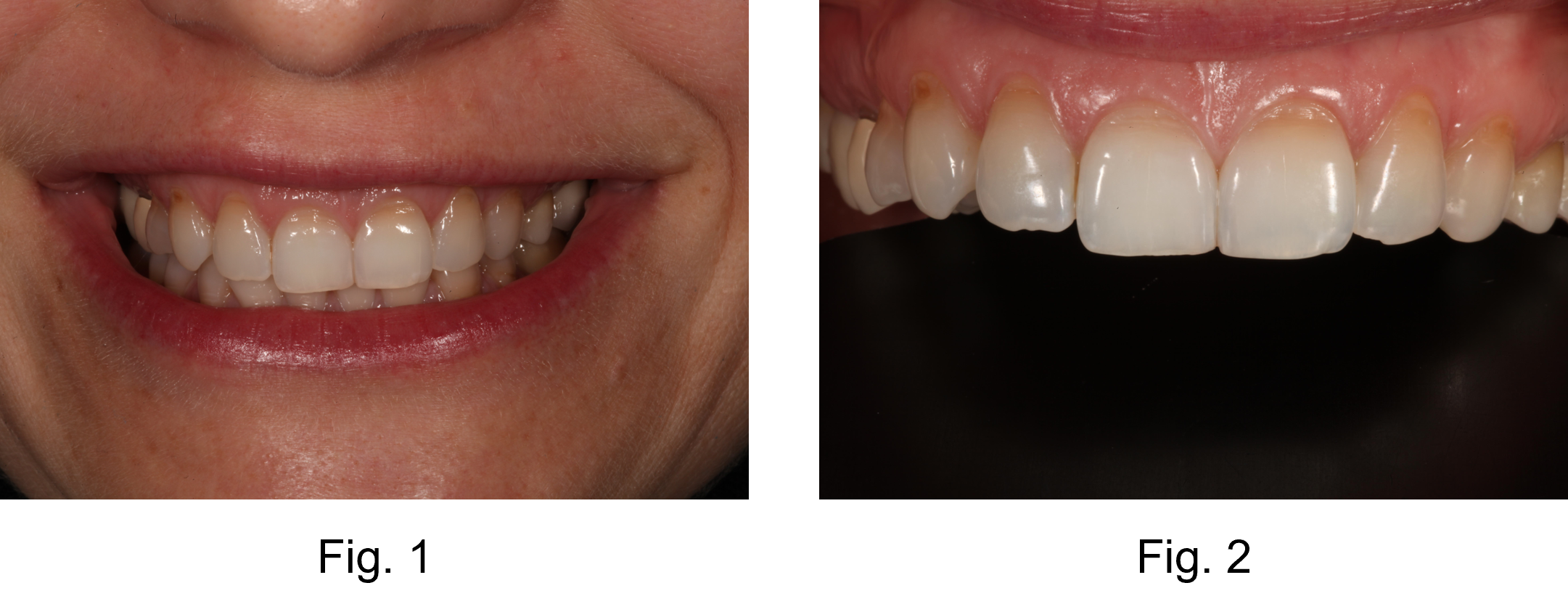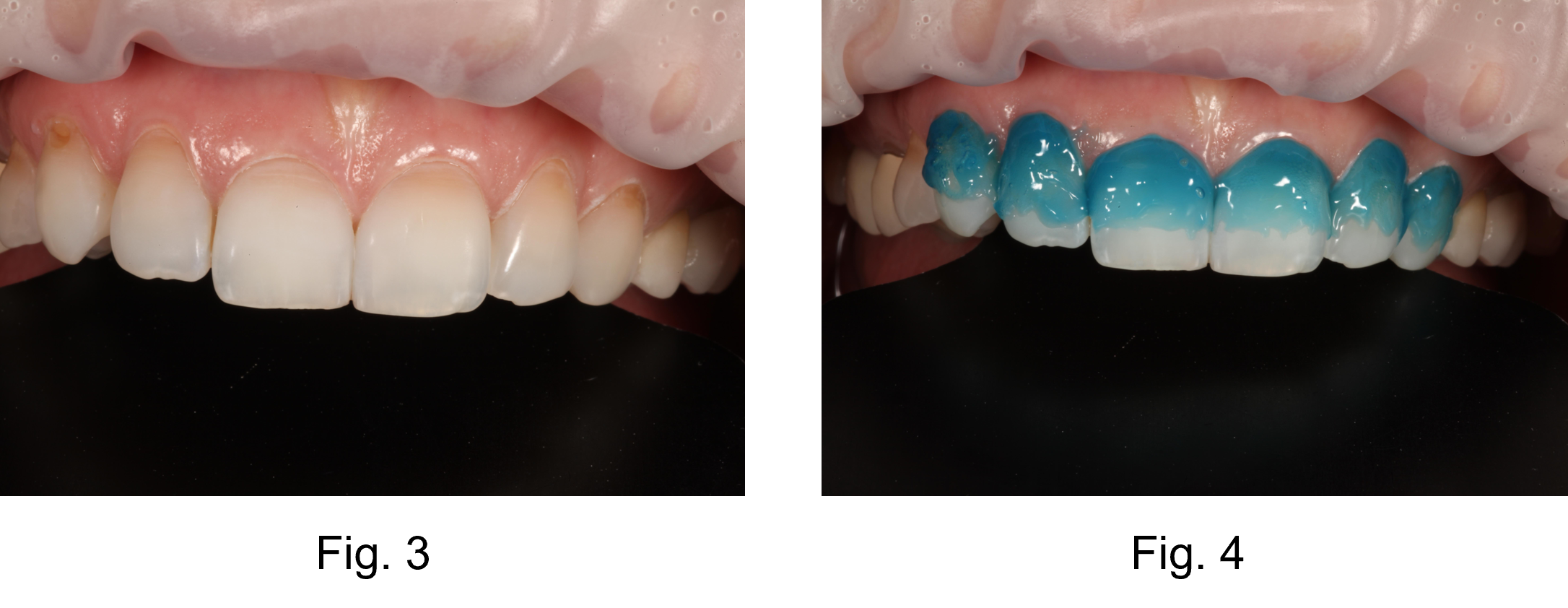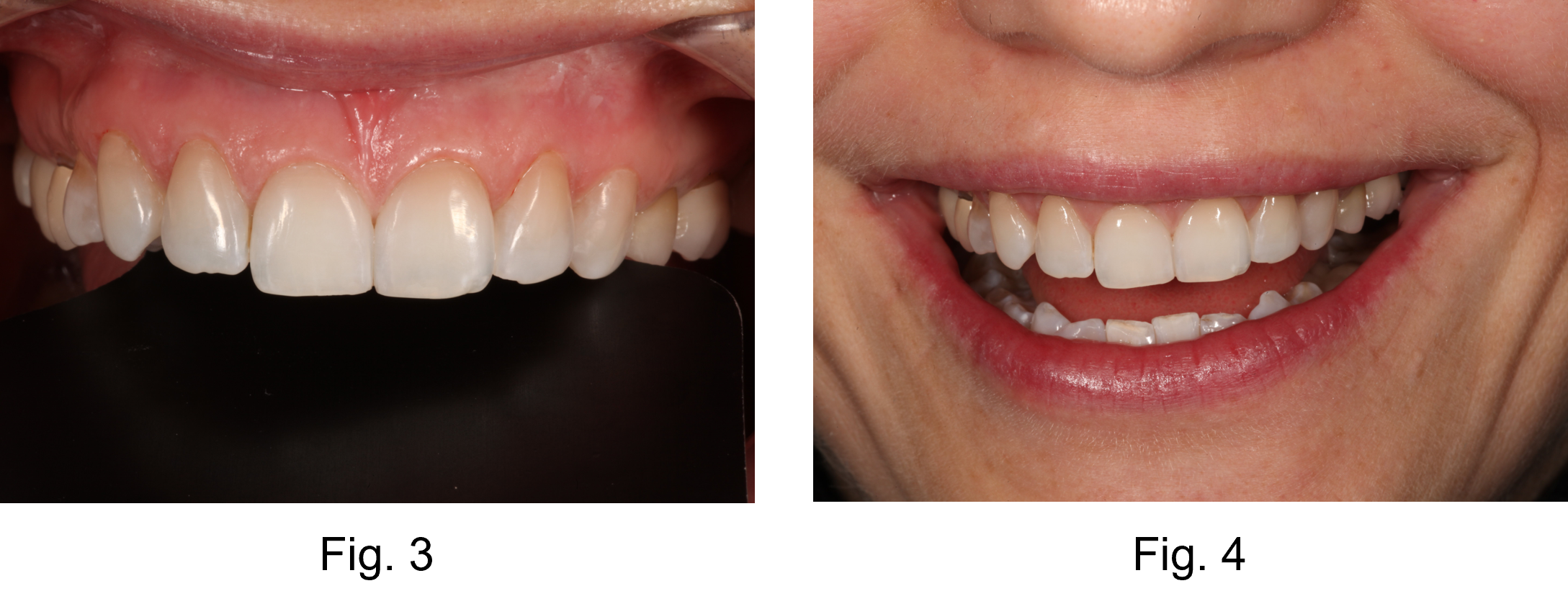The case shows a common issue with many patients, which is gingival erosion on the anterior teeth which can affect their smile confidence [figure 1, figure 2].

TREATMENT
The etiology for these types of non-carious lesions can be multifactorial. Nevertheless, when a patient presents with this type of esthetic dilemma, their options are either direct composite bonding or porcelain veneers. In most cases I’ve found that the patient is not interested in doing an expensive smile overhaul, especially when the rest of the tooth structure beyond the erosion is in good condition and they are generally happy with the shape of their teeth. In these cases, direct composite bonding is ideal because it is non-invasive and can easily be repaired over time with no damage to the natural tooth structure. The only tooth preparation in this case was air abrasion (Microetcher II, Danville) to make sure there was no plaque and the enamel and dentin surfaces would be microetched for optimum bond strength [figure 3]. A total etch technique was used and the etch was placed beyond the intended finish line to ensure a seamless margin [figure 4]. Tokuyama Universal Bond was used as the bonding agent.

I wanted to test to see if there was any difference in the universal OMNICHROMA compared to the flowable version OMNICHROMA FLOW, so I restored teeth 6-8 with OMNICHROMA and teeth 9-11 with OMNICHROMA FLOW. The final photos show how both the OMNICHROMA and OMNICHROMA Flow blend equally and seamlessly into the natural tooth structure [figure 5, figure 6]


